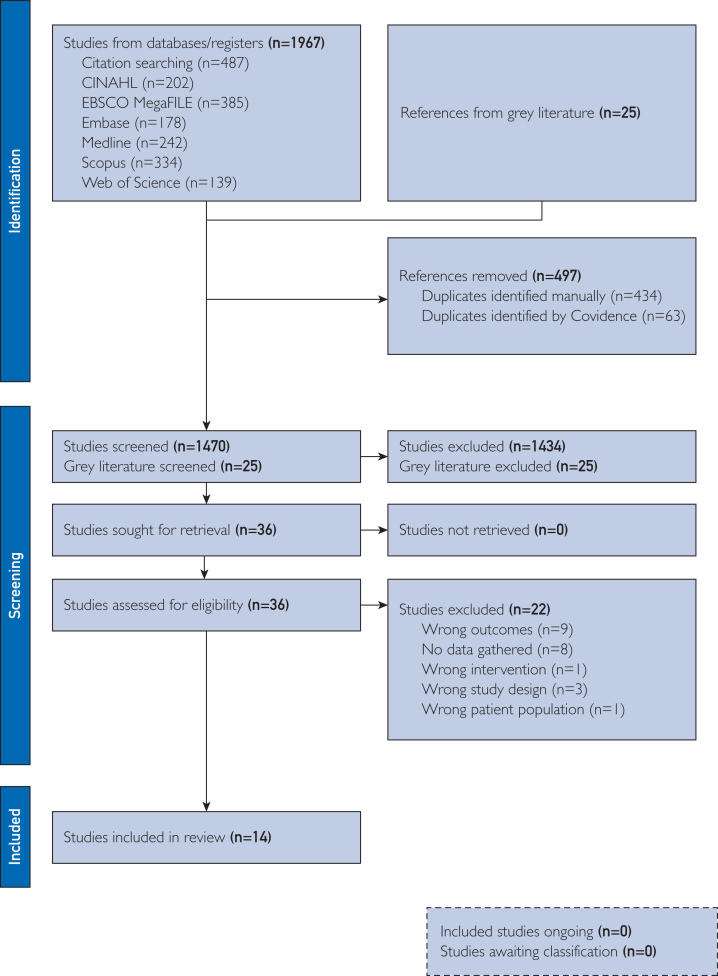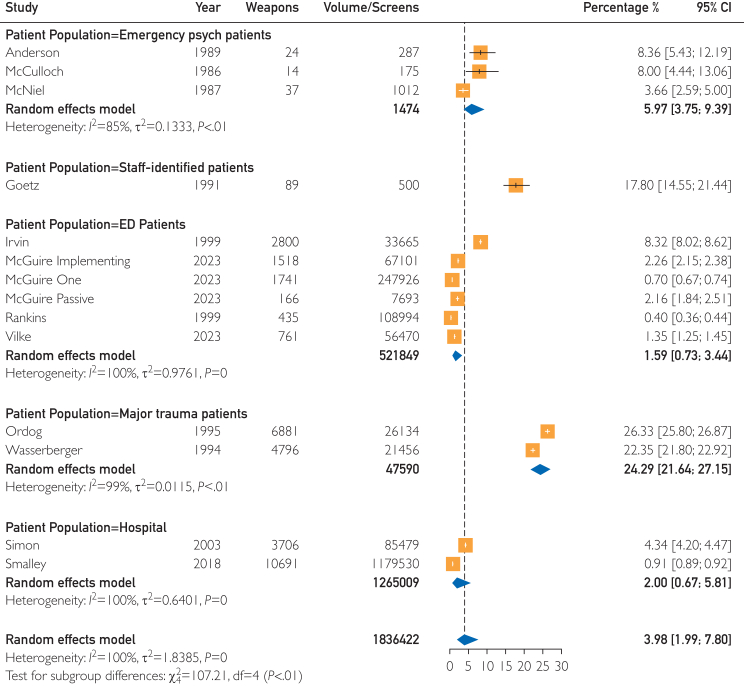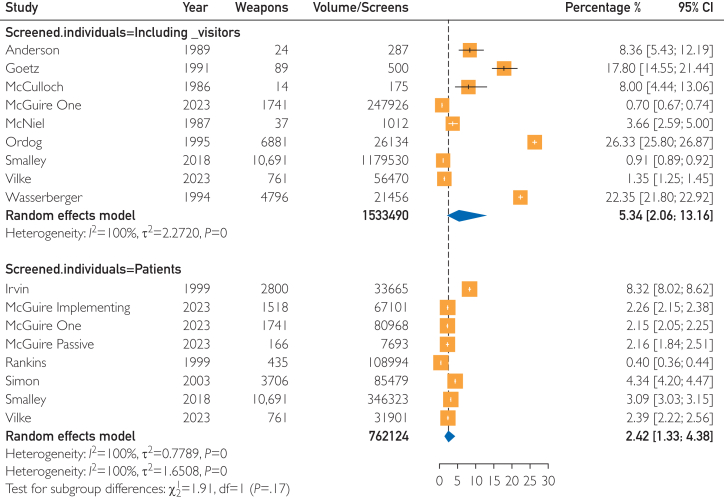卫生保健环境中武器的流行:系统回顾和荟萃分析。
Mayo Clinic proceedings. Innovations, quality & outcomes
Pub Date : 2025-02-01
DOI:10.1016/j.mayocpiqo.2024.11.004
引用次数: 0
摘要
本研究旨在系统地评估和量化卫生保健环境中武器的流行程度。系统检索MEDLINE、Embase、Scopus、Web of Science、CINAHL和EBSCO MegaFILE,检索时间从成立到2024年1月12日。主要结果是卫生保健机构对病人和/或访客使用武器的普遍程度。患病率汇总了所有研究,并使用随机效应模型进行估计。根据武器类型、武器携带者特征、武器筛查/检测技术和筛查人群特征进行亚组分析。共纳入14项观察性研究。所有的研究都来自美国,发表于1984年至2023年之间。在纳入研究的人群中,武器流行率从0.4%到26.3%不等。总体合并武器患病率为4.0% (95% CI, 2.0%-7.8%)。大多数武器是带刃的(3.8%);95% CI, 1.5%-8.9%),其次是其他武器(0.6%;95% CI, 0.3%-1.3%)和火器(0.1%;95% ci, 0.02%-0.5%;页= . 01)。在美国,到医院就诊的人应该携带武器;然而,根据环境、患者类型和检测方法的不同,患病率差异很大。本文章由计算机程序翻译,如有差异,请以英文原文为准。



Prevalence of Weapons in the Health Care Setting: A Systematic Review and Meta-Analysis
This study aimed to systematicically evaluate and quantify the prevalence of weapons in the health care setting. A systematic search of MEDLINE, Embase, Scopus, Web of Science, CINAHL, and EBSCO MegaFILE was performed from inception to January 12, 2024. The primary outcome was the prevalence of weapons in the health care setting on patients and/or visitors. Prevalence was pooled across studies and estimated using a random effects model. Subgroup analyses were done based on types of weapons, characteristics of weapon carriers, weapons screening/detection technology, and screened population characteristics. A total of 14 observational studies were included. All studies were from the United States and were published between 1984 and 2023. Weapons prevalence ranged from 0.4% to 26.3% among populations screened in the included studies. The overall pooled weapons prevalence was 4.0% (95% CI, 2.0%-7.8%). Most weapons were bladed (3.8%; 95% CI, 1.5%-8.9%), followed by other weapons (0.6%; 95% CI, 0.3%-1.3%), and firearms (0.1%; 95% CI, 0.02%-0.5%; P<.01). Weapons prevalence was 2.0% (95% CI, 0.7%-5.8%) among individuals entering the hospital setting, compared with 1.6% (95% CI, 0.7%-3.4%) of individuals entering the emergency department and highest (24.3%; 95% CI, 21.6%-27.2%) when major trauma patients were hand-searched. Prevalence was higher in males than that in females (11.1% vs 3.1%; P=.01). Weapons should be expected on individuals presenting to hospitals in the United States; however, prevalence varied widely based on the setting, type of patients, and detection method.
求助全文
通过发布文献求助,成功后即可免费获取论文全文。
去求助
来源期刊

Mayo Clinic proceedings. Innovations, quality & outcomes
Surgery, Critical Care and Intensive Care Medicine, Public Health and Health Policy
自引率
0.00%
发文量
0
审稿时长
49 days
 求助内容:
求助内容: 应助结果提醒方式:
应助结果提醒方式:


